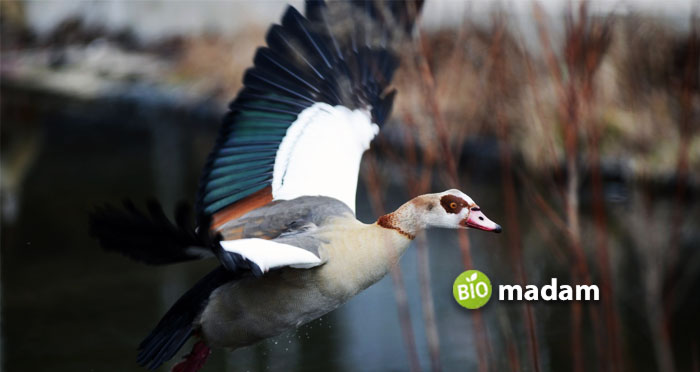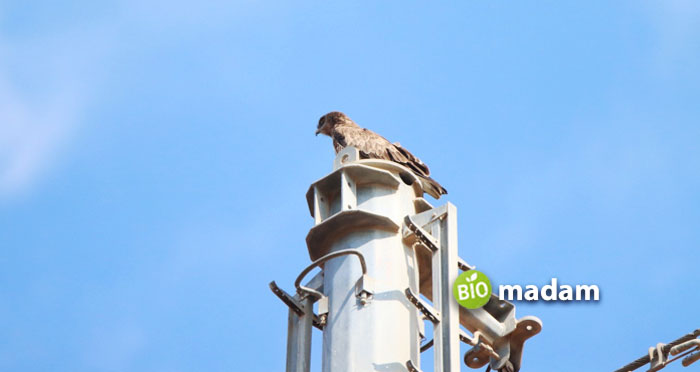Dealing with bird issues at your industrial site can be downright maddening. Imagine setting up for a big day, only to find birds have nested right where you least wanted them. Or that moment when you’re about to kickstart an operation, and a flock decides it’s the perfect spot to hang out.
And, the clean-up – endless hours trying to undo what they’ve done, not to mention the hidden costs that come with it.
It feels like a never-ending battle against our winged visitors, doesn’t it?
After all, your factory is the perfect spot.
Why?
Attraction to Shelter: Birds look for places to nest and shelter. Your industrial site, with its array of machinery, structures, and nooks, offers plenty of cozy spots. It’s like a birdie condo! And if the conditions are right, why wouldn’t they set up shop?
Food Sources: Scraps, open waste bins, or nearby natural food sources can be an all-you-can-eat buffet for birds. And just like us, if they find a place that serves good food, they’ll keep coming back.
Safety from Predators: Higher structures in industrial areas offer safety from ground-level predators. It’s a bird’s eye view with an added layer of protection.
But Here’s the Thing: understanding their motives isn’t about making peace with the disruptions they cause. Instead, it gives us the insight needed to create a game plan, one that addresses the root of the issue rather than just putting a band-aid on it.
Traditional Bird Control Methods
Physical Deterrents
Among various industrial bird control methods and solutions, physical barriers often serve as the primary line of defense against avian intruders, aiming to make the environment uninviting
Spikes
These are rows of upward-pointing pins attached to various surfaces, designed to deter birds from settling. Birds, being creatures of comfort, shy away from uneven and prickly surfaces. While spikes are effective and require minimal maintenance, their prominent appearance can be unsightly and might not align with the aesthetic goals of every industrial site.

Nets
Essentially mesh-like barriers, nets are stretched across open spaces to act as a physical barrier, preventing birds from accessing specific areas. They shine in environments with vast open areas. However, they need regular checks to ensure no damage has occurred over time.
In some cases, if not installed correctly, birds can become trapped, which can lead to unintended harm.
Wires
These are thin strands stretched across potential perching areas, offering an unstable landing zone that deters birds. Their subtlety makes them suitable for locations concerned with maintaining a particular aesthetic, as they are less conspicuous than spikes. However, their installation can be intricate, and occasionally, clever birds might figure out how to perch between the spaces.
Visual Deterrents
Birds rely heavily on their sight for navigation, foraging, and spotting threats. Leveraging this reliance, various tools and devices have been developed to visually deter them from certain areas.
Reflective Tapes
These shiny, often metallic tapes are designed to flutter in the wind, reflecting sunlight in unpredictable ways. The erratic movements and reflections can be unsettling for birds, making them think twice before approaching the area. While these tapes can be cost-effective and easy to set up, their effectiveness might diminish on overcast days or during times when sunlight is limited.
Decoys
From fake owls to predatory bird silhouettes, decoys prey on the natural fears of birds. The idea is simple: if a bird believes a predator is nearby, it’ll avoid the area. However, the effectiveness of decoys can be hit or miss. Stationary decoys can quickly be identified as non-threats, so occasional repositioning or choosing models with movable parts can increase their impact.
Laser
A more modern take on visual deterrence, lasers can be used to create points or patterns of light that birds find intimidating. They’re especially effective during low light conditions like dawn or dusk. Care has to be taken with these devices, though, to ensure they’re used safely and don’t harm the birds or become a distraction for humans.
Contemporary and Innovative Solutions
As industries evolve and technology progresses, new solutions emerge that offer more efficient and sometimes more humane ways to deter birds.
Bioacoustics
Going beyond just playing recorded distress calls, bioacoustics involves the study and application of the natural vocalizations of birds.
By understanding and replicating these calls, industries can simulate a more authentic environment of distress or threat. These methods are often more effective than traditional noise machines because they tap directly into the birds’ communication patterns.
Drones
These flying devices have taken bird control to the skies. Drones can be flown to disrupt bird gatherings or monitor large areas for nesting activity. Some even come equipped with speakers that play predatory bird sounds. While effective, especially for large industrial areas, they require skilled operators and can be more costly than stationary deterrents.
Bird Birth Control
One innovative approach to managing bird populations, especially in areas where their numbers have become problematic, is through the use of bird birth control. This strategy doesn’t aim to harm birds but rather to manage their proliferation in a humane manner.

Among the solutions in this realm is a product like OvoControl. This bait, originally developed for pigeon control, acts as a form of reproductive intervention. When consumed by pigeons, it impacts their ability to lay viable eggs, effectively reducing the number of hatchlings over time.
What’s intriguing about this approach is its humanity; instead of causing direct harm or displacement, it targets the growth rate of the population. The active ingredient, nicarbazin, has been around for a while, initially being used in the poultry industry. While effective, consistent application is key, and it’s important to ensure that the bait is consumed regularly for the desired effect.
Electromagnetic Fields
Some modern devices produce electromagnetic fields that disrupt the birds’ sense of direction. Without their innate navigational abilities, these areas become unappealing to the birds. While promising, more research is still needed to fully understand the implications and long-term effects of these devices on both birds and the environment.

Hi, they call me Jenna, and I am also known for achieving a gold medal during my Ph.D. in science life. I always had a dream to educate people through my utmost writing hobby. So, I chose this blogging path, and Biomadam gave me this opportunity to present for them. I now stand to entertain you. Continue reading my articles & discuss if you’ve any confusion through the comment section below.

